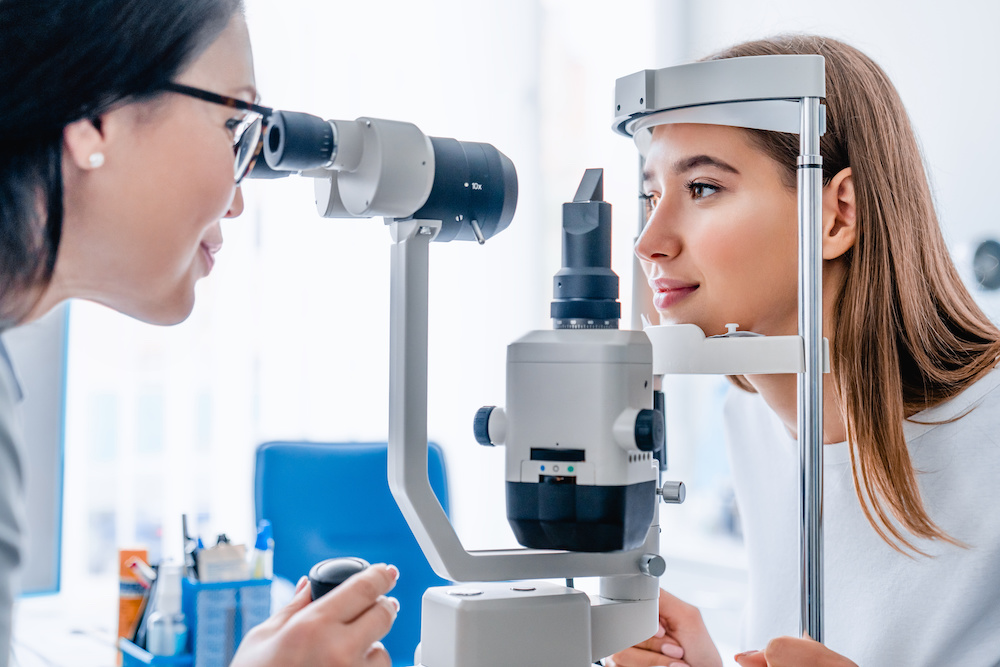How is glaucoma (cataract) diagnosed?
From the age of 40, you should have your intraocular pressure checked every two years. If it rises, glaucoma could develop unnoticed. An examination is also advisable in the case of diabetes, after severe eye infections or injuries.
In order to make a reliable diagnosis, the ophthalmologist performs various tests: tonometry (measurement of intraocular pressure), an eye test and an ophthalmoscopy. In this way, the ophthalmologist can view and assess the retina.
What is the effect of intraocular pressure in glaucoma (cataract)?
The intraocular pressure is measured by the ophthalmologist with a so-called applanation tonometer. The unit of measurement for the pressure is “millimeters of mercury” (mmHg). Normal values for a healthy intraocular pressure are between 10 and 18 mmHg.
In glaucoma, the pressure can rise from 40 to 60 mmHg. If the measured value in the eye is repeatedly above 21 mmHg, it may or may not be glaucoma.
Then further measurements and examinations become necessary, because the optic nerve is already damaged at a pressure around 21 mmHg or below. Patients usually do not notice this, even if the values rise above 30 mmHg.
 Beware of the long-term consequences of glaucoma (cataract)
Beware of the long-term consequences of glaucoma (cataract)
The increased pressure disrupts the blood supply and nutrition of the sensitive nerve cells. Visual disturbances occur. Typical of glaucoma are the so-called visual field defects. The tricky thing is that when the visual disturbances occur, the disease is often already far advanced.
With early diagnosis and treatment, the chances of preserving visual function are favorable. If the therapy starts too late or is not treated sufficiently, the affected person may lose his eyesight. Glaucoma is one of the most common causes of blindness.

